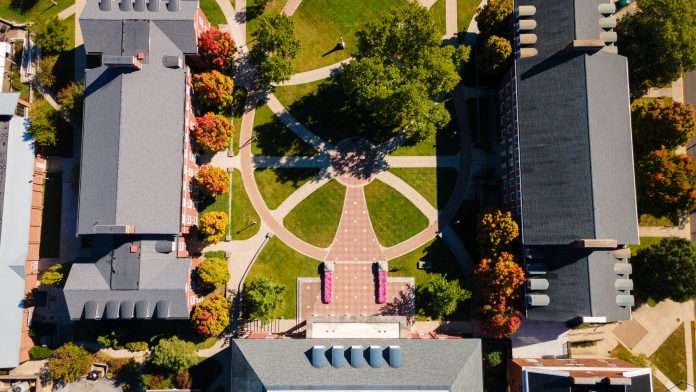
DePauw University is installing a new, standardized building numbering system across campus to help police and firefighters quickly locate buildings during emergencies.
The project is led by the Office of Environmental Health and Safety, placing reflective numbers at all main entrance and exit points of larger campus buildings. The initiative is a response to guidance from the Department of Homeland Security aimed at improving safety at facilities with complex layouts.
Adam Hamilton, director of environmental health and safety at DePauw, explained that while campus community members are familiar with building nicknames and landmarks, first responders need a consistent, clear system.
“We could say, ‘go to the east door by the dance studio,’ and we would know where that is. But the fire department is not in our buildings every day,” Hamilton said. “This gives them a reference point to know where they’re at.”
The numbering system was developed in collaboration with the Greencastle Fire Department and DePauw Police. For each building, the primary entrance used by first responders, typically near a fire department connection (FDC) for hoses is designated as Door #1. The remaining doors are numbered counterclockwise around the structure.
An important safety feature is the placement of the numbers. Exterior numbers are installed high on doors, while interior numbers are placed lower.
“If a building was on fire and a firefighter was going in, it could become engulfed in smoke, forcing them to crawl on the floor,” Hamilton said. “The numbers are reflective so a firefighter with a helmet light can see the number to know which door to exit.”
This allows a responder to radio their location, such as “exiting Door #6” so command staff can direct assistance precisely.
The project began with discussions nearly two years ago. After a pilot installation at the Green Center for the Performing Arts, the system was expanded. The physical installation is being handled by staff from Event Space Management.
Hamilton said that the system is useful beyond fires, including for medical emergencies or critical police situations. First responders now have digital blueprints of the numbered buildings on tablets for quick reference.
The campus community can help maintain the system’s effectiveness by ensuring the numbers are not affected by posters, furniture, or other items.
“Everything is about keeping the student experience pleasant and keeping our students, faculty and staff safe,” Hamilton said. “This is just another effort to do that by assisting first responders and making their job easier in a time of crisis.”
Installation is expected to be completed on all larger academic buildings within the next couple of months.
